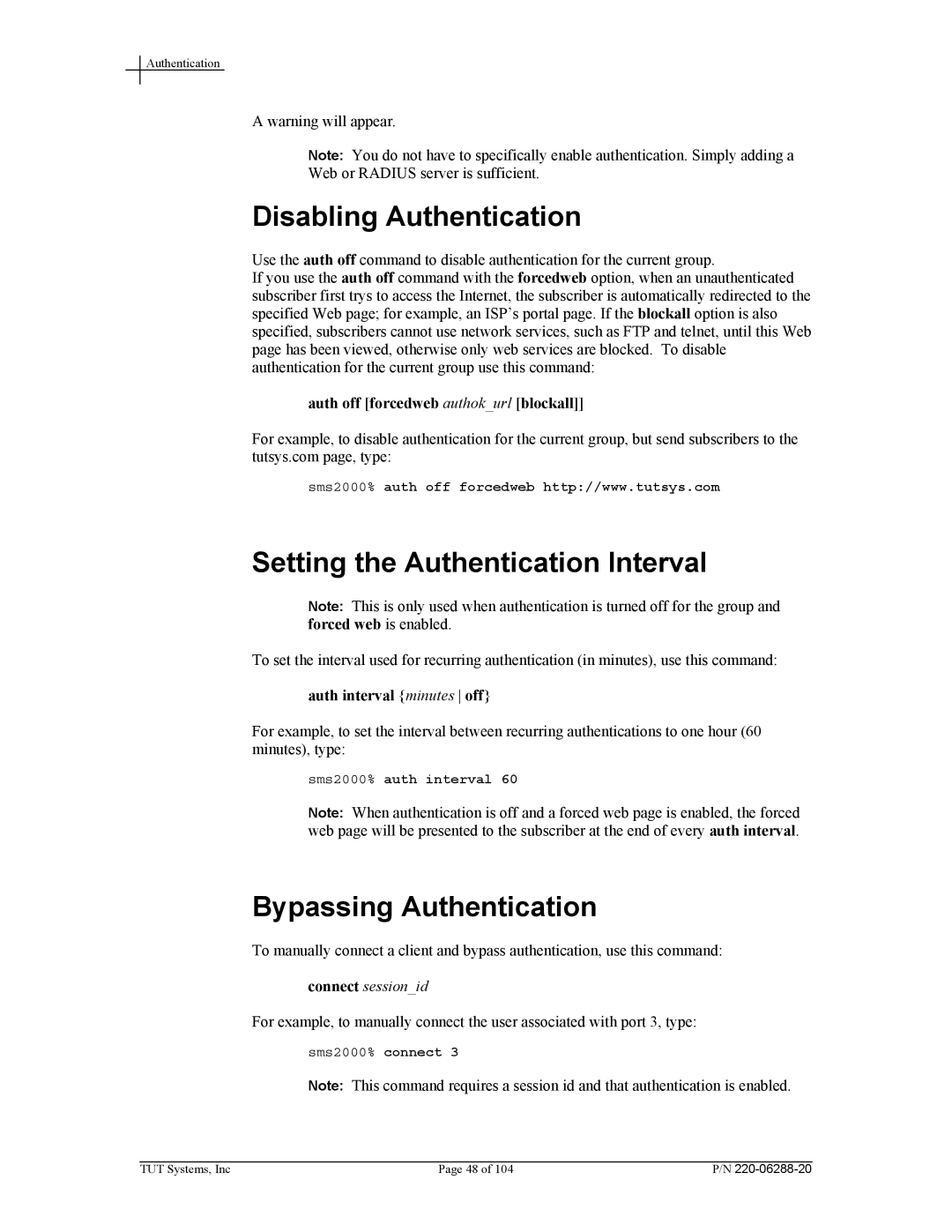
Authentication
A warning will appear.
Note: You do not have to specifically enable authentication. Simply adding a
Web or RADIUS server is sufficient.
Disabling Authentication
Use the auth off command to disable authentication for the current group.
If you use the auth off command with the forcedweb option, when an unauthenticated subscriber first trys to access the Internet, the subscriber is automatically redirected to the specified Web page; for example, an ISP’s portal page. If the blockall option is also specified, subscribers cannot use network services, such as FTP and telnet, until this Web page has been viewed, otherwise only web services are blocked. To disable authentication for the current group use this command:
auth off [forcedweb authok_url [blockall]]
For example, to disable authentication for the current group, but send subscribers to the tutsys.com page, type:
sms2000% auth off forcedweb http://www.tutsys.com
Setting the Authentication Interval
Note: This is only used when authentication is turned off for the group and forced web is enabled.
To set the interval used for recurring authentication (in minutes), use this command:
auth interval {minutes off}
For example, to set the interval between recurring authentications to one hour (60 minutes), type:
sms2000% auth interval 60
Note: When authentication is off and a forced web page is enabled, the forced web page will be presented to the subscriber at the end of every auth interval.
Bypassing Authentication
To manually connect a client and bypass authentication, use this command:
connect session_id
For example, to manually connect the user associated with port 3, type:
sms2000% connect 3
Note: This command requires a session id and that authentication is enabled.
TUT Systems, Inc | Page 48 of 104 | P/N |
